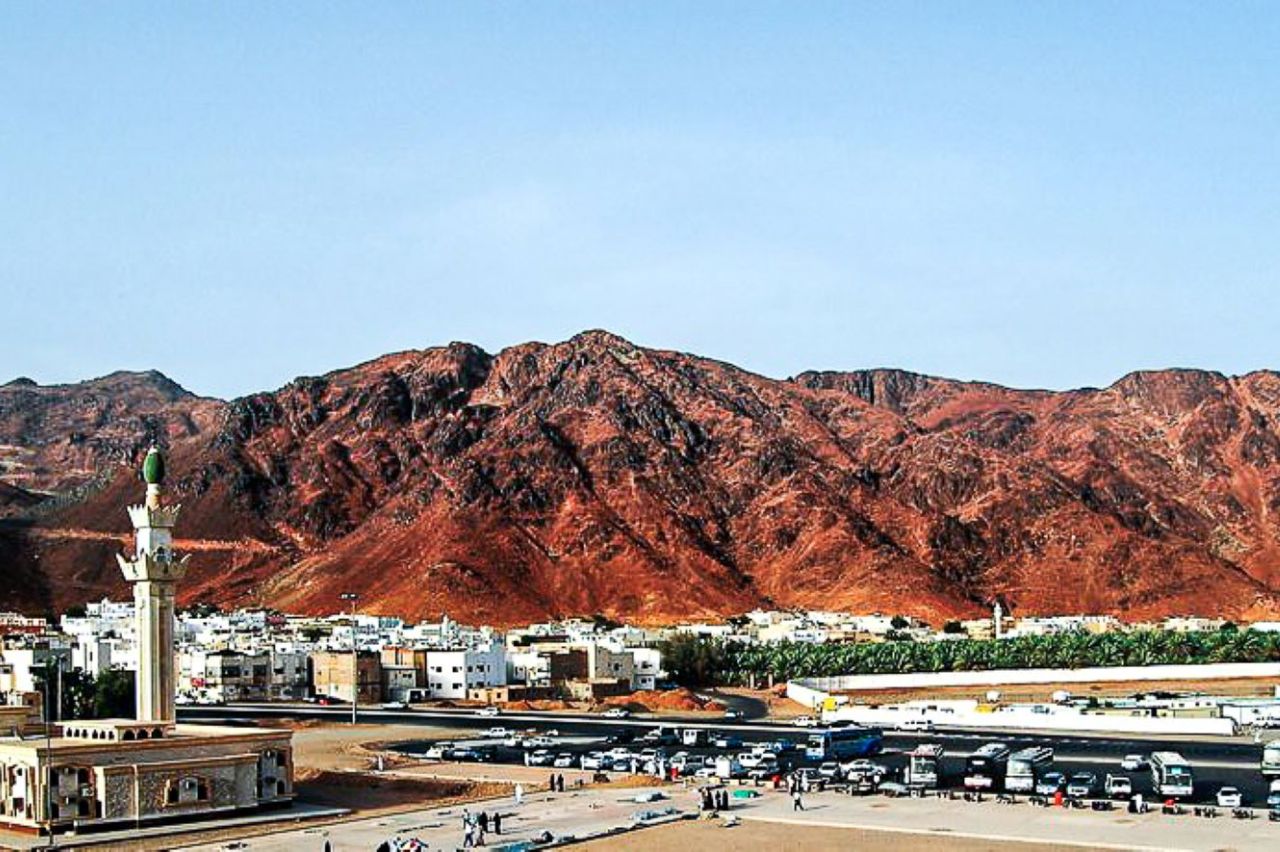The Battle of Uhud, also known as Ghazwa e Uhud, is regarded as the second large-scale battle in Islamic history. Fought in Shawwal, 3 AH, against the Quraysh, this battle is acknowledged not only as a pivotal moment in shaping Islam’s spread but also serves as evidence that victory is never guaranteed. 700 Muslims, led by the Muhammad SAW, bravely defended themselves against an army of 3000 disbelievers, 300 camels, and 200 horses led by Abu Sufyan.
Since the battle was fought in the north valley of Mount Uhud, it was termed the Battle of Uhud. Derived from Arabic, the word Uhud literally translates to the one. Although how the mountain got its name remains a mystery, some say that it was because of a giant with the same name that lived on it, others state that the mountain takes its name due to being one of a kind as compared to the surrounding mountains.
The Reason
Following the humiliating loss at the Battle of Badr, where the Muslims had killed many prominent figures, including Abu Jahl, the Makkan disbelievers got together and decided to deliver a fatal blow to the Muslims and erase the name of Islam from history. Since the caravan that Abu-Sufyan led before Badr had returned safely to Makkah, the remaining Makkan leaders and the children of those killed at Badr demanded that Abu-Sufyan spend his riches on fighting Muhammad SAW. Therefore, the profits from his recent trade venture (estimated 50,000 dinars) were spent on war equipment against the Muslims.
The Armies
Almost a year later, the Quraysh army, led by Abu Sufyan, Khalid bin Waleed, Ikrimah ibn Abi Jahl, and Amr ibn al-As, reached a village, Dhil-Halifah, six or seven miles from Madinah and camped until reaching the battleground. But this time, the Quraysh also had a women’s wing with them in the army, which included the wives, daughters, mothers, and sisters of those who had been killed in Badr. The women’s wing was under the command of Hind, the wife of Abu-Sufyan, who was there to boost the morale of the Quraysh.
Meanwhile, Muhammad SAW gathered an army of 1000 people, including Hamza RA, Ali RA, Mundhir bin Amr (RA), Zubair bin al-Awwam, 50 archers, and 4 horsemen.
The Dispute
After Muhammad SAW got the news of the Quraysh, he consulted with his brethren for their advice on whether they should go out to confront the disbelievers or forfeit themselves while staying in Madina. Abdullah bin Ubayy suggested that they should remain inside Madinah because if the disbelievers besieged the city, it would be a disadvantage to them. He further added that if they decide to attack Madina, the men could confront them, and the women and children could throw rocks at them.
Some companions were not involved in the previous battle, and they suggested moving out of Madina to confront the Quraysh. Therefore, it was decided that the battle would be fought outside of Madinah.
Muhammad SAW went home and put his shield on, and then he marched. At this point, Abdullah bin Ubayy returned to Madina, claiming that he was angry that the Muhammad SAW didn’t listen to him, and he and his people said that if you (Muhammad SAW) were going to fight today, we would have accompanied you. However, we don’t think that you will fight today. (They thought that going out of Madina to fight was not a good idea and that it was more like suicide than a battle).” He took his army with him, which was composed of 300 people. Therefore, only 700 people remained to face the Quraysh.
Preparing For The Battle
Taking his 700 men with him, Muhammad SAW marched forward and camped in a valley behind Mount Uhud. Then, he started preparing his forces for the battle and said, “No one is allowed to fight before I issue the command to fight.”Muhammad SAW appointed Abdullah bin Jubayr as the leader of the archers and told them, “Don’t let the horsemen near us, and be aware that the Quraysh might attack us from your direction. Whether victory was for us or against us, you are to remain in your positions. And even if you see birds picking us up, don’t abandon your positions.”
The Start Of The Battle
After Muhammad SAW wore his two protective shields, he gave the flag to Mus`ab bin `Umayr. The Quraysh came forward with their troops, with Khalid bin Al-Walid as the leader of the right side of the horsemen and `Ikrimah Ibn Abi Jahl on the right side. And on March 23rd, 625 AD, the battle began. The Muslims fought bravely, and Hamza RA and Abu Dujanah RA set an example for the rest of the warriors. As the Muslims stormed through the disbelievers, the confidence of the Quraysh began to crumble, and many of them fled the battlefield.
Seeing the absence of the disbelievers, the archers who were positioned for the defense of Muslims from the back decided to leave their position to collect war booty.
The Turning Point
After seeing the archers leave their position, Khalid bin Walid diverted an attack from behind. Since the archers were not there to defend, nobody could stop the impending attack.
Later on, an ayah was revealed about the battle of Uhud, which stated to blame yourselves for the defeat. (Verse 165, Surah Imran)
As the Quraysh army tore through the Muslims, killing some and injuring others, Prophet Muhammad SAW was hit by a rock, which bruised his lip, chipped his teeth, and damaged his helmet. In the panic and hurry to defend themselves, rumors spread that the Quraysh had martyred Muhammad SAW.
End Of The Battle
As soon as this news swept across the Muslims, the companions lost all hope. This was when another companion caught sight of Muhammad SAW. When the other Muslims got news that Muhammad SAW was alive, they rushed towards him and surrounded him. Seeing as the Muslims had already lost, the Prophet successfully led his troops to a shelter on top of Mount Uhud.
70 Muslims were martyred during the battle of Uhud, including the beloved uncle of Muhammad SAW, Hamza RA, and many other companions who suffered severe injuries. In a hadith, it is stated that Sa’d bin Mu’adh RA was injured to such an extent that his sister identified him with his fingerprints or by a mole on his body. [Sahih al-Bukhari, 4048]
The battle of Uhud was won by neither the Quraysh nor the Muslims, but rather, it was a partial victory on both sides since the Quraysh didn’t achieve their aim of expunging Islam from history.

